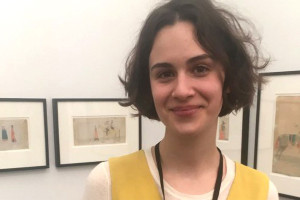
Meet the Dealer: Donald Ellis Gallery at Frieze New York
Donald Ellis Gallery talks to Artspace about the works on show at Frieze New York 2019, including Ledger Art and parfleche, containers made of stiff hide and painted by Plains women
ca. 1880
hide, paint
height: 26 ½"
width: 12 ½"
Inventory # CP4311-79
Please contact the gallery for more information.
Ex. collection, T.N. Luther
Canfield Gallery, Santa Fe, NM, acquired 1994
Private Collection, Toronto, ON
Kemper Gallery of Art , Kansas City, 1984
Torrence, Gaylord. The American Indian Parfleche: A Tradition of Abstract Painting. Seattle: University of Washington Press, 1994, pg. 93, pl. 10 for and earlier example with a similar motif
The word “parfleche” has its origins in the French fur trade of the 16th and 17th centuries. Literally translated “to turn away arrows” likely referred to the toughness of rawhide and its concurrent use in the manufacture of shields. The majority of parfleche were made on the Plains between 1750 and 1880. Although the style of decoration has its roots in older forms of painting, parfleche were a relatively new invention corresponding to the introduction of horses to the Plains. The transformation to a nomadic way of life necessitated containers to carry possessions including dried foods, tools and ceremonial regalia. The manufacture and decoration of parfleche envelopes was the exclusive work of Plains women who cut and stretched the hides, applying their rich and colourful designs prior to cutting and forming the containers. Parfleche almost invariably display bold geometric designs revealing affinities with earlier painting on hide originating in the Northeast and Great Lakes regions before certain of these groups moved westward to the Plains.

Donald Ellis Gallery talks to Artspace about the works on show at Frieze New York 2019, including Ledger Art and parfleche, containers made of stiff hide and painted by Plains women